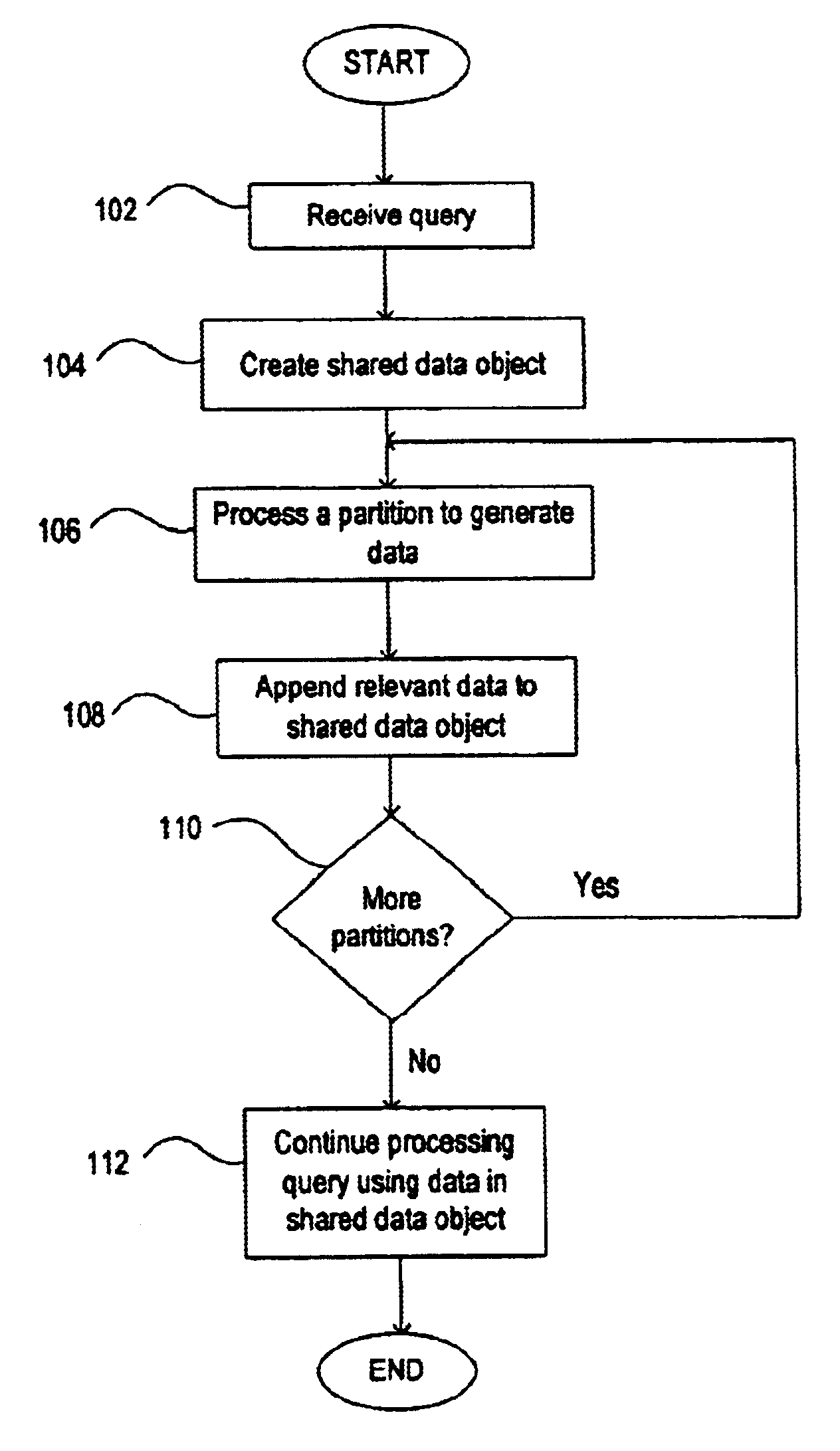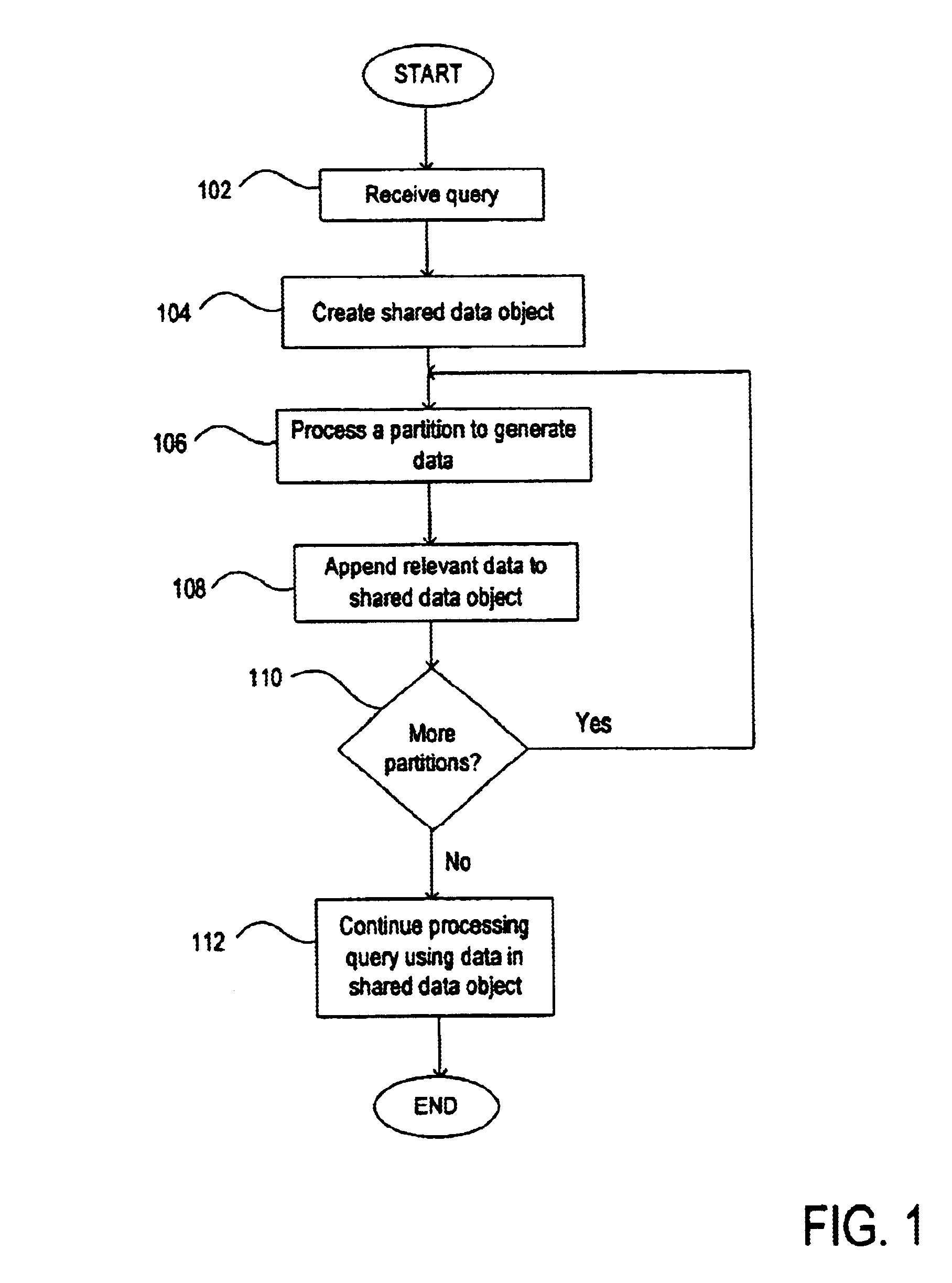Method and system for efficiently evaluating a query against partitioned data
a partitioned data and efficient evaluation technology, applied in the field of methods and systems, can solve the problems of relatively inefficient procedures, inability to completely process a first partition before processing a second partition, etc., and achieve the effect of facilitating the identification of unneeded partitions
- Summary
- Abstract
- Description
- Claims
- Application Information
AI Technical Summary
Benefits of technology
Problems solved by technology
Method used
Image
Examples
Embodiment Construction
The present invention can be applied to database systems that employ user-defined indexes and ancillary operators. A user-defined index is an index whose structure is not native to the system and which can be defined by a user. It often involves index types and index access routines that are defined by an index definer or application creator. In one approach to implementing user-defined indexes, data that identifies access routines for the user-defined indexes are registered with a database system. In response to relevant statements issued by the database system, the registered routines are called to create or access an index structure relating to the data corresponding to the user-defined index. More information regarding an implementation of user-defined indexes is described in more detail in U.S. Pat. No. 5,893,104, entitled "Extensible Indexing," issued on Apr. 6, 1999, which is hereby incorporated by reference in its entirety.
Ancillary operators involve a class of database oper...
PUM
 Login to View More
Login to View More Abstract
Description
Claims
Application Information
 Login to View More
Login to View More - R&D
- Intellectual Property
- Life Sciences
- Materials
- Tech Scout
- Unparalleled Data Quality
- Higher Quality Content
- 60% Fewer Hallucinations
Browse by: Latest US Patents, China's latest patents, Technical Efficacy Thesaurus, Application Domain, Technology Topic, Popular Technical Reports.
© 2025 PatSnap. All rights reserved.Legal|Privacy policy|Modern Slavery Act Transparency Statement|Sitemap|About US| Contact US: help@patsnap.com



